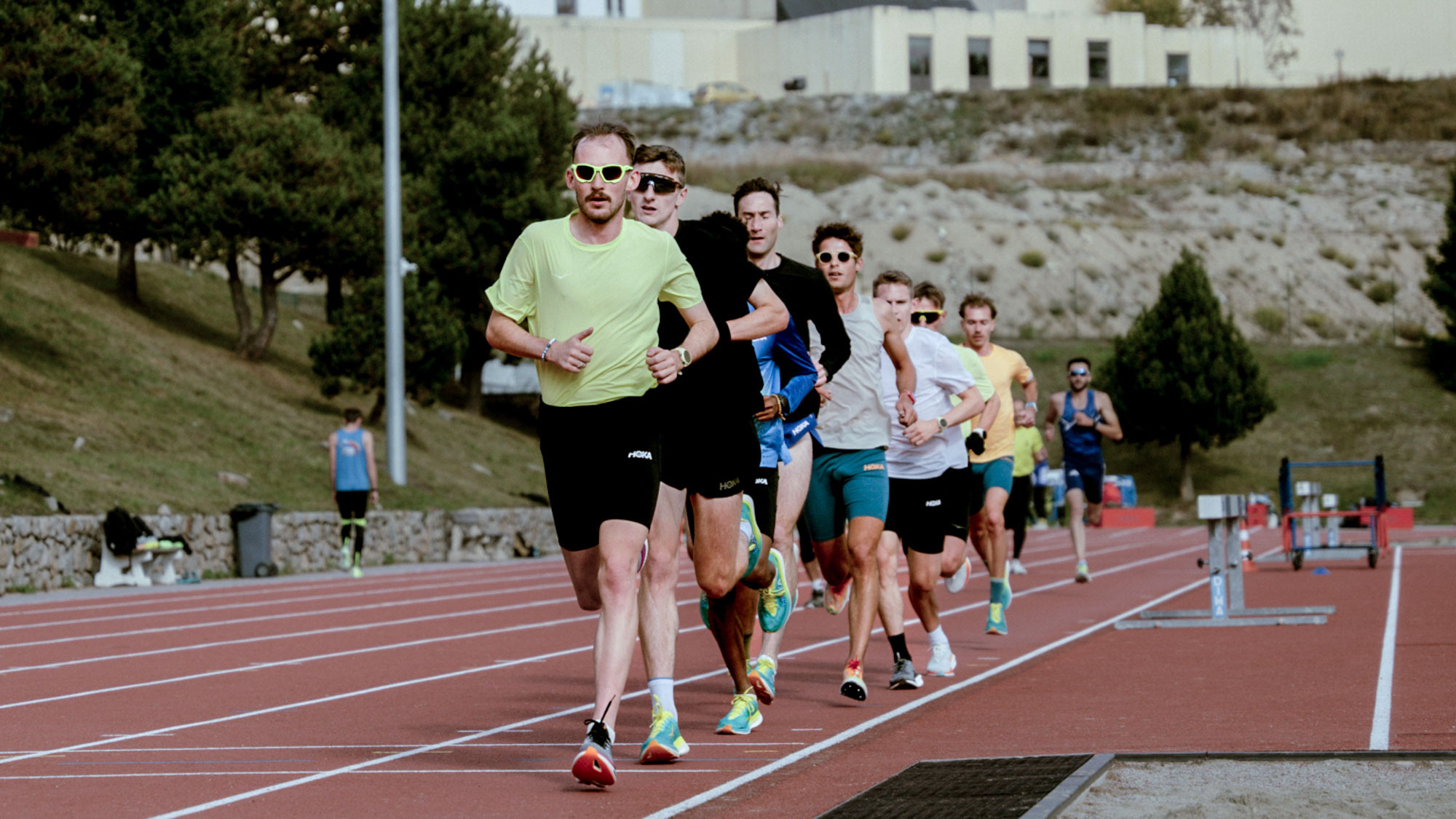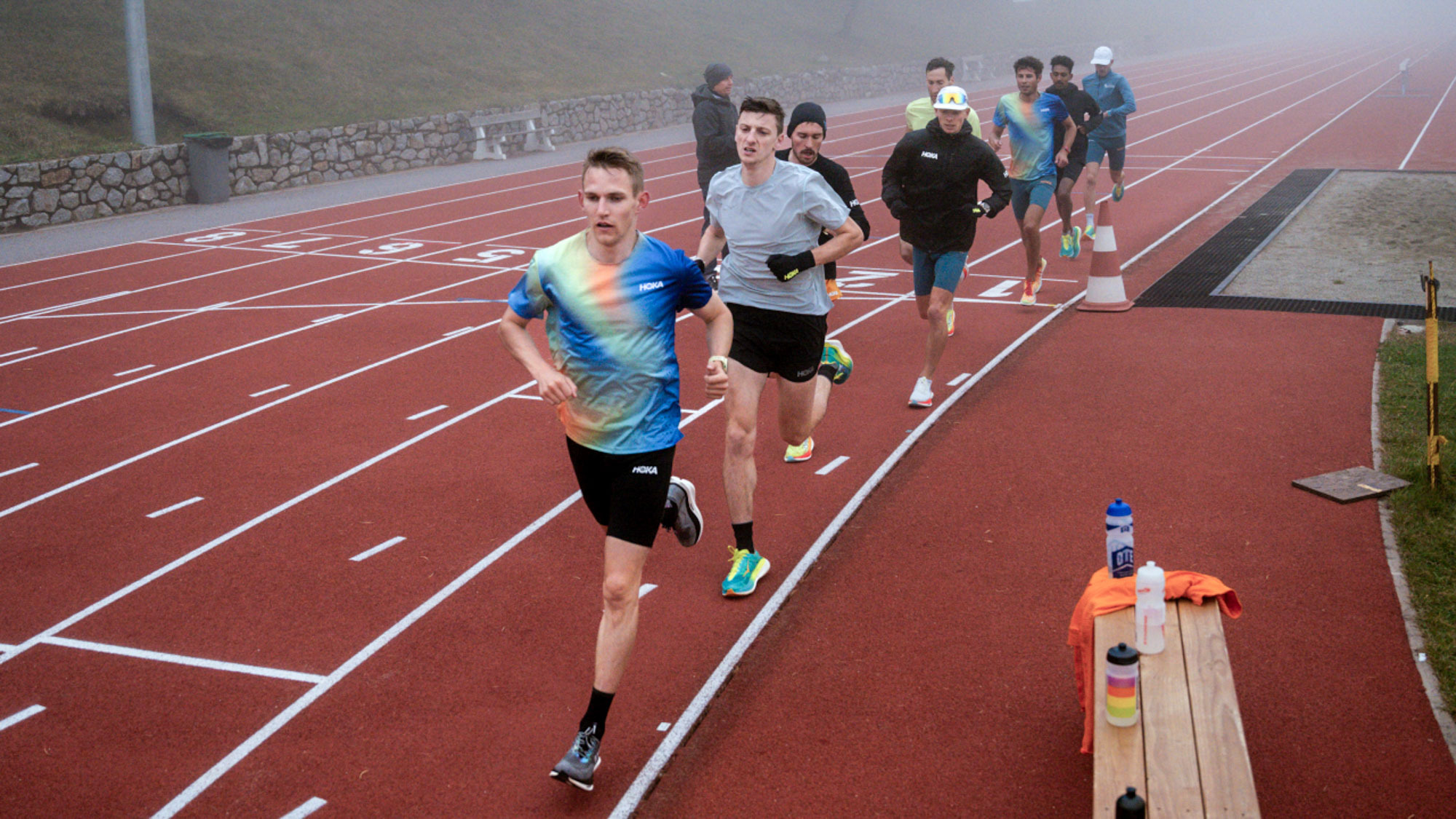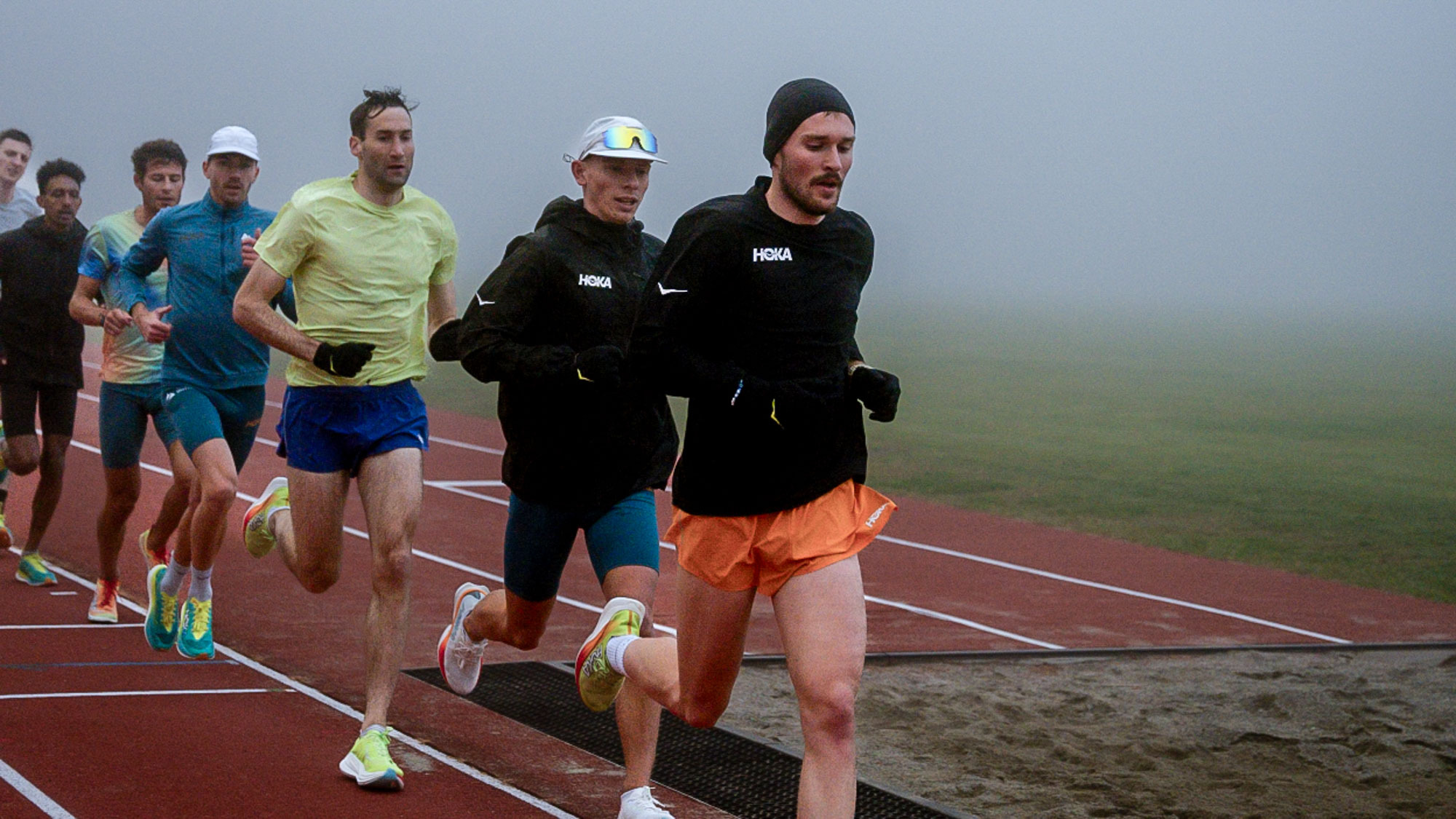
Spending time at altitude is now an integral part of training for many professional athletes, especially those in endurance sports like running and cycling. It usually involves training for several weeks at altitudes of 4,000-10,000ft, with the benefits including an increase in red blood cells and more efficient use of oxygen when you return to sea level.
Hoka’s pro runners lace up their running shoes and train at altitude several times a year, and a group of them are currently in Font Romeu in France for a month-long camp, training at heights of around 5500ft.
I joined them for a weekend to get a taste of altitude training and also insights into their approach to training and recovery in general. Here’s what I learned.
Altitude training takes some time to get used to
The thin air is a shock to the system when you first try to run at altitude, and I noticed that my heart rate was considerably higher than usual for a given pace. It takes a week to 10 days to adjust to altitude and, even then, you have to judge your effort very carefully to not overcook it.
Under the careful guidance of coach Andy Hobdell, the athletes spend their first week at altitude doing easier sessions while they adjust. I did a track session and a couple of other runs myself during the weekend and the increased time it takes to recover during interval runs was the most noticeable effect of altitude for me.
As an interesting side note, I was testing the Garmin Fenix 8 while away and it gives guidance on how well you’re adjusting to altitude. After 48 hours in Font Romeu, it said I was 33% acclimated, which is amusingly precise but does support the idea you need a week or so to adjust.
Your diet changes

You eat a lot at a training camp. When training once or twice a day at altitude you need to ensure you have the energy, so meals are huge and snacks are regular, and often also huge. There’s also an emphasis on fueling runs properly through gels and sports drinks, something that I can neglect a little during busy days when I’m rushing to get out for a run.
The athletes also adjust their diet for the altitude by making sure they get enough essential vitamins and minerals. Iron is particularly important because it’s used to form the hemoglobin in red blood cells, so some will take iron supplements.
The benefits can last several weeks
My limited knowledge of altitude training before the camp gave me the impression that it was mainly used just before races. So an athlete would train at altitude then come down and race while the benefits of training in the thin air were at their peak.
However, the benefits can last five or six weeks and altitude camps are used as part of a general training block, rather than as a short-term boost for particular races, though they do also help on that front.
The benefits do vary from person to person, however — athletes will get their blood levels tested before and after camps to see how much they’ve responded to the camp.
It’s all about the afternoon nap
A key benefit of being at a training camp at altitude or otherwise is that you can focus entirely on your job — which is to run, eat and recover — meaning that the athletes have plenty of downtime to nap, especially in the afternoon after a hard morning run.
Obviously this is something that’s trickier to fit into your day when you’re not a professional athlete, but the focus on making time for recovery is something any keen amateur can learn from.
Early nights and a focus on high quality sleep where you stick to a routine and avoid things that can negatively affect it, such as alcohol, can work wonders for your recovery.
Running can be a team sport

Training in a group of runners is amazing, and was my favorite benefit of the camp as someone who mostly runs solo at home. Running in a train on the track makes the reps fly by and helps you to both relax during runs and push harder when required.
The Hoka team vibes were immaculate during the weekend I was there, both in terms of the fun they had together and how they welcomed others into the camp. Even as a group of competitive runners from across Europe who will be competing with each other in the future, they embrace the benefits of working as a team to all improve together.
The key takeaway I had from the camp was to try and run with other people more, even if it means a little more organization and a bit less time with the best running headphones.
Don’t use carbon plate shoes too much
Hoka makes a couple of the best carbon plate running shoes and they were on display during the athlete’s hardest sessions in Font Romeu. However, outside of those sessions, carbon shoes were not used regularly, with runners either using Hoka’s cushioned shoes or the Hoka Mach X2, which has a plastic plate.
The evidence around increased injury risk with carbon shoes is still not definitive because they haven’t been around for very long, but taking a better safe than sorry approach seems smart, and saving the super-shoe boost for key sessions and race day also has its benefits.
I spent the whole weekend running in the Hoka Mach 6, a lightweight trainer without a plate that was great for the variety of runs I did in Font Romeu, including track, a steady effort and a long run. As someone who does use carbon shoes a little more than I perhaps should during training, it was a reminder that I can use ‘normal’ shoes more regularly.







